Introduction
Maintaining order in a preschool classroom full of colors, laughter, and small footprints may be like catching a cloud. Understanding how to discipline preschoolers in the classroom may turn chaos into a supportive learning environment for preschool instructors, parents, and early childhood educators. Positive disciplinary ideas will illuminate preschool classroom management and teaching practices in this blog article. By the end, you’ll know how to nurture young brains.
Why Positive Discipline Matters
A good learning environment requires positive discipline. It employs empathy and understanding to guide behavior, unlike punishment. Teachers teach self-control and emotional management via positive discipline. Preschoolers develop confidence, respect, and collaboration via this technique, preparing them for lifetime learning and social skills. By transitioning from punishment to advice, educators may unleash a child’s potential and learning passion.
The Role of Emotional Intelligence
Effective punishment requires understanding a child’s emotions. Emotional intelligence helps instructors understand and address children’s emotions. This means validating and constructively expressing their emotions. Education via empathy helps youngsters recognize emotions and build coping skills. This ability helps children manage behavior, build emotional resilience, and prepare for future problems.
Creating a Respectful Environment
Respect fosters constructive discipline. Respect and understanding make youngsters more inclined to reciprocate. By clearly communicating standards and limits regularly and gently, teachers may create this atmosphere. This method promotes respect and teaches kids about classroom norms. Respectful environments allow kids to express themselves without judgment.
Consistency is Key
Consistency is key to preschool classroom management. Routine and predictability make kids feel safe and comfortable. Teachers provide children a secure foundation by sticking to rules and consequences. Consistent behavior management teaches children responsibility by linking behaviors to results. Stability strengthens the teacher’s authority as a trusted guide in the child’s learning path.
The Power of Redirection
Redirection is a gentle yet effective early childhood behavior control method. Redirecting a child’s attention to a better activity helps avert escalation. This method offers alternatives to encourage positive involvement in children. If a youngster is disruptive, a teacher may propose a new activity they like. Redirection corrects conduct without confrontation while maintaining a pleasant school tone.
Encouraging Autonomy
Teaching children autonomy promotes responsibility and self-discipline. Teachers inspire children to accept responsibility by letting them choose. This method improves decision-making and self-esteem. Let kids pick activities or develop classroom rules to encourage autonomy. Children are more willing to obey rules and improve the classroom when they believe their participation counts.
Modeling Desired Behaviors
Teaching discipline by modeling is effective. Children learn by watching people; therefore, instructors should model desired conduct. Teachers model tolerance, compassion, and respect for preschoolers. Conflict resolution is also modeled by instructors, who educate youngsters on how to resolve conflicts peacefully. This method promotes good conduct and classroom harmony.
Using Positive Reinforcement
Rewarding youngsters for good conduct promotes it. This may be done with stickers, compliments, or other little rewards. Children are more likely to repeat excellent conduct when they correlate it with pleasant results. Positive reinforcement should highlight good conduct to teach children. This promotes self-esteem and motivation, creating an encouraging teaching environment.
Setting Clear Expectations
Clear expectations guide kids. Teachers should explain rules clearly and consistently to preschoolers. Visuals and role-playing may help explain these expectations. Kids are less inclined to push boundaries when they know classroom rules. Clear expectations minimize misunderstandings, making learning easier and more cooperative.
Encouraging Open Communication
Teachers and students must communicate to manage early childhood behavior. Children are less prone to act out when they can express themselves. Teachers should encourage inquiries and debates to provide kids a secure place to express themselves. Open communication builds trust and deepens the teacher-student connection, making behavioral concerns simpler to resolve.
Building a Sense of Community
A good classroom community improves discipline. Children support and appreciate each other more when they feel linked to their classmates and instructors. Collaboration, group initiatives, and shared duties help teachers develop community. By encouraging teamwork, educators create a friendly atmosphere where kids help one another. This belonging inspires children to participate in class.
Celebrating Achievements
Children’s confidence and drive can grow a lot when their accomplishments are recognized and celebrated. Rewarding kids for both small and big achievements builds good habits and inspires them to keep working hard and showing off their skills. Celebrations don’t have to be big all the time. A simple thank you or word of praise can go a long way toward making young students feel proud of their work and accomplishments.
Cultivating Empathy
Empathy is a key skill for making people caring and understanding. Teachers can make the classroom a better place for everyone by teaching kids to understand and respect other people’s feelings. Storytelling and role-playing are two activities that help kids understand how others feel and help them put themselves in others’ shoes. Teaching kids empathy is a great way to help them learn important social skills that will help them as adults and in society.
Structuring a Balanced Schedule
A well-organized and well-balanced plan is very important for keeping a good learning setting. Preschool teachers can meet the needs of all of their students by combining schoolwork with fun, rest, and artistic activities. A well-thought-out routine not only keeps kids from getting too busy, but it also helps them focus and stay interested. For kids to stay interested and excited about learning, this balance is important.
Engaging Families
Family participation is an important part of good early childhood education. Getting families involved in their children’s schooling builds a strong network of support for them. Teachers can get families involved by talking to them often, holding workshops, and letting parents help with school activities. This partnership makes sure that the way kids are disciplined is always the same and builds a support system for the child that is good for their general growth.
Conclusion
Preschoolers in the classroom need compassion, sensitivity, and inventiveness to be disciplined. Teachers may help students develop self-control and character by using positive discipline and creating a supportive atmosphere. It’s about shaping hearts and minds, not simply behavior. Set clear expectations, encourage open communication, and model desired behavior. These tools let you design a classroom that values learning, respect, and fun. Check out our preschool instructor reading and training programs for extra help.


